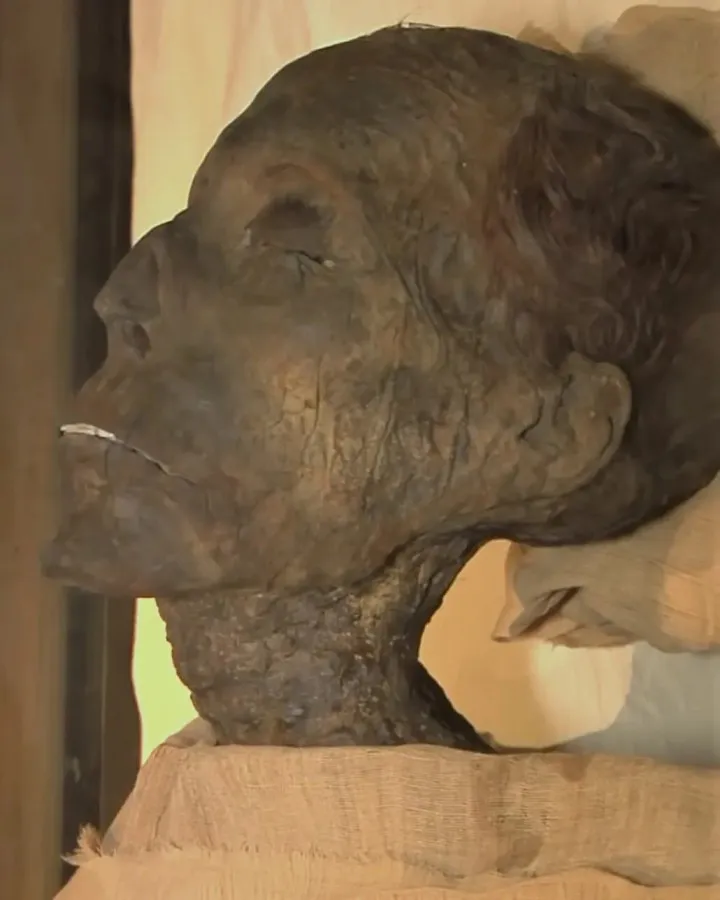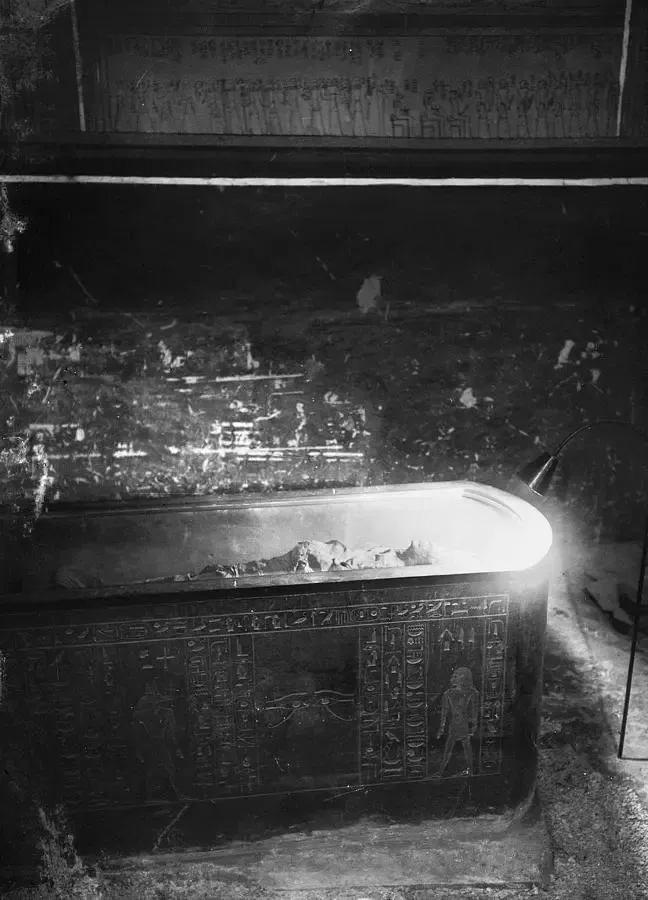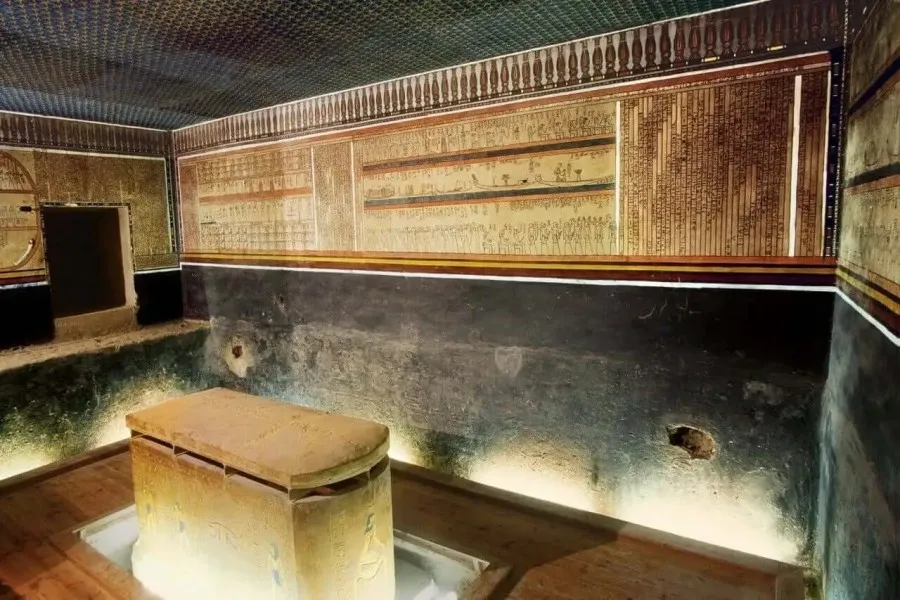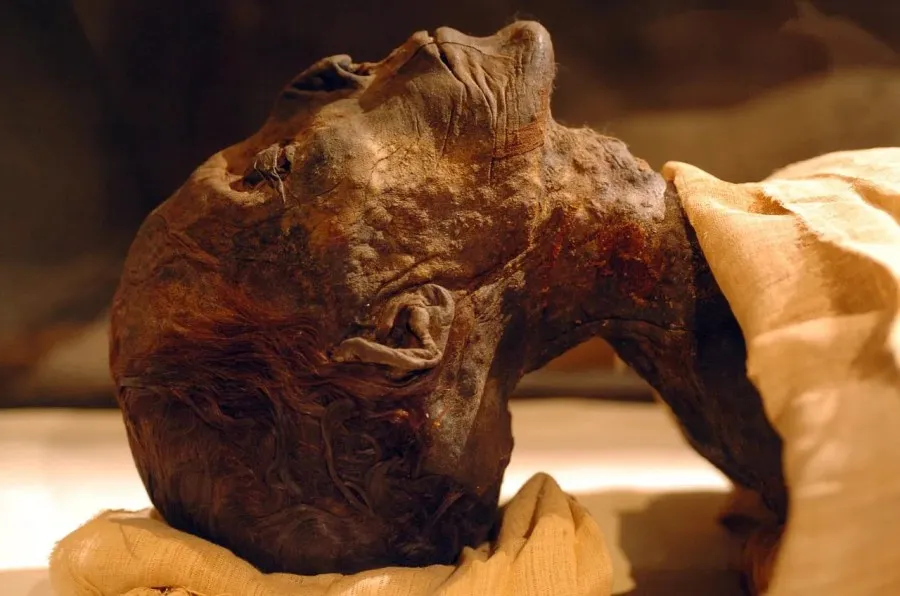Amenhotep II’s Lineage: Egypt’s 18th Dynasty King
The French excavator Victor Loret found the mummy of Amenhotep II in 1898, still resting in its own sarcophagus in his tomb (KV35) in the Valley of the Kings. At that time, before the discovery of Tutankhamun’s tomb, he was the only king whose mummy had survived the vicissitudes of continuous theft and desecration and remained in its own sarcophagus in his own tomb.

Amenhotep II (sometimes called Amenophis II, meaning “Amun is satisfied”) was the seventh king of the Eighteenth Dynasty of Egypt. Amenhotep inherited a vast kingdom from his father Thutmose III and maintained it by conducting some military campaigns in Syria; however, he fought much less than his father, and his reign saw an effective cessation of hostilities between Egypt and Mitanni, the major vying kingdoms for power in Syria.
Mummy of King Amenhotep II
The mummy has long brown hair, including some white hair, and a bald patch on the occipital and upper parietal regions. Worn teeth indicated that Amenhotep II was much older than Thutmose IV, between 40 and 50 years old.
Related: Mummy of Thutmose IV

Historical sources described Amenhotep II as a strong, powerful and athletic man, with a sinister tendency towards brutality in war, which would generally match the physical appearance of his mummified body.
The tomb also contained a cache of the mummies of eight other kings and queens, moved there during the Third Intermediate Period to protect them from the ravages of grave robbers.
The burial chamber of Amenhotep II
Photo: Jean-Dominique Dallet
“The mummy of Amenhotep II was found in the sarcophagus of his tomb in 1898. The king was middle-aged when he died; his mother has wavy brown hair that has begun to turn grey.”
— Chronicles of a Pharaoh, The Intimate Life of Amenhotep III, by Joann Fletcher (#aff)

Amenhotep II, also known as Amenhotep the Great, was an ancient Egyptian king who ruled during the 18th Dynasty of the New Kingdom period. He is known for several achievements during his reign.
One of Amenhotep II’s notable achievements was his military campaigns. He conducted successful military expeditions to several regions, including Nubia, Syria, and Palestine. These campaigns helped expand Egypt’s influence and secure its borders.
The Mummy of Amenhotep II
Amenhotep II also focused on the construction and renovation of temples and monuments throughout Egypt. He made important contributions to the construction of the Karnak temple complex in Thebes, dedicated to the god Amun. He also built a mortuary temple in Thebes, known as the “House of Millions of Years.”
Related: Mummy of Thutmose III

Furthermore, Amenhotep II is known for his athletic prowess. He was an accomplished charioteer and archer, and he organized and participated in various sporting events and competitions. He even left detailed records of his victories and achievements in these activities.
Overall, Amenhotep II’s achievements include military successes, architectural contributions, and athletic achievements, all of which left a lasting impact on the history of ancient Egypt.
New Kingdom, 18th Dynasty, reign of Amenhotep II, ca. 1427–1401 BC Now in the National Museum of Egyptian Civilization, Cairo. CG 61069
Mummy of Amenhotep II
A pharaoh, undisturbed for millennia, his tomb a treasure trove of secrets… Amenhotep II, the mighty ruler of ancient Egypt, was discovered in his sarcophagus in 1898. But his tomb held more than just his mummy. Eight other royal mummies, hidden away from grave robbers, were found within. Whispers of Amenhotep’s strength and brutality echo through history. What secrets do these ancient remains hold? What stories do they tell of a long-lost empire? Unravel the mysteries of KV35 and the pharaoh who rests within.






